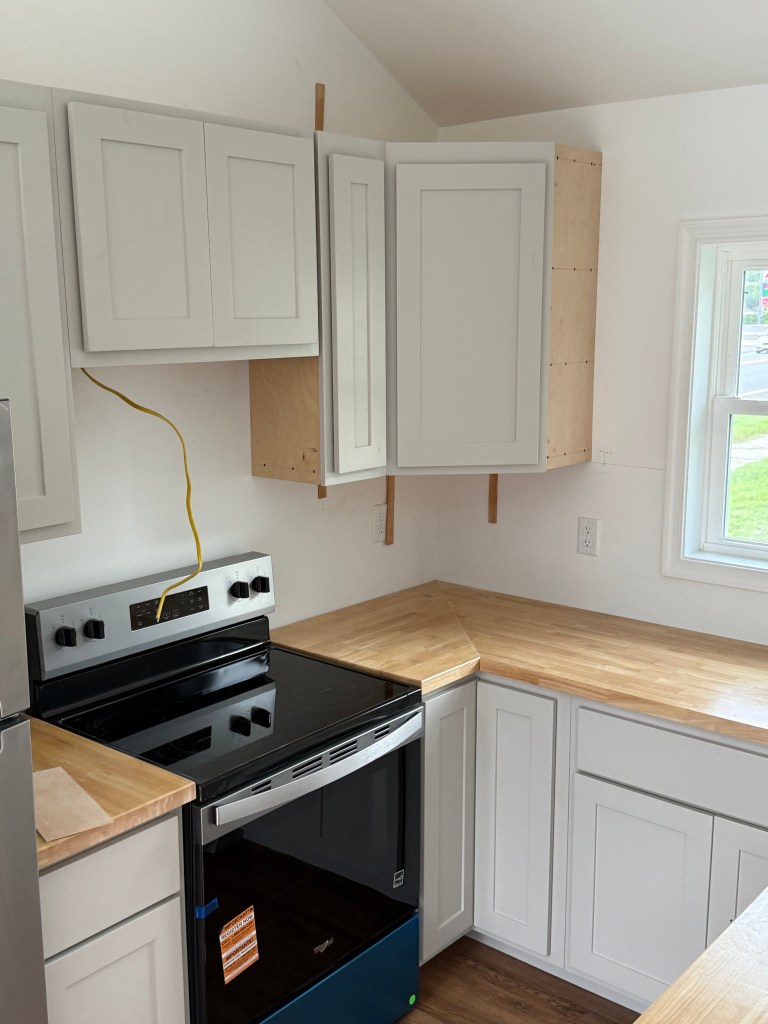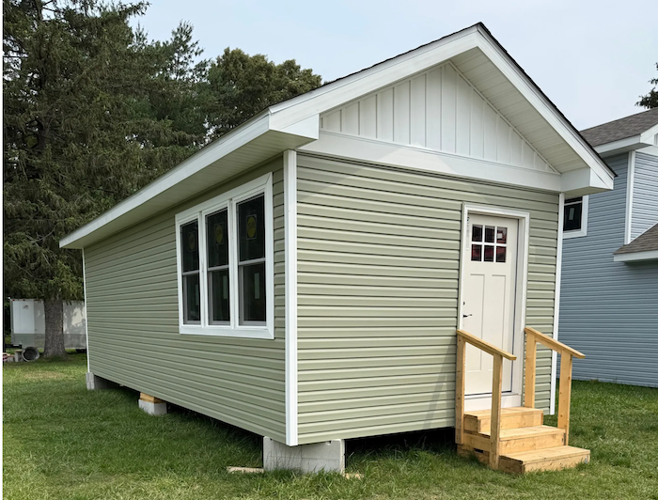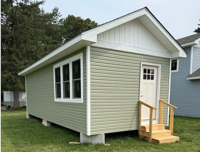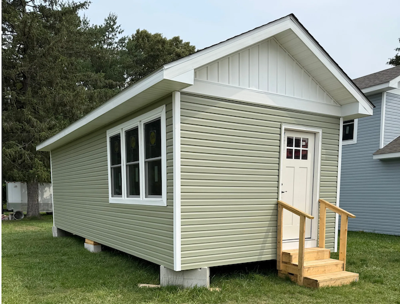For one Sussex County-based nonprofit, tackling what it sees as the big problem of housing affordability in Southern Delaware will require thinking small. But not all stakeholders seem to agree.


Little Living, an organization hoping to increase the region’s affordable housing stock by building tiny home communities, is developing projects in Georgetown and Frederica. While the Georgetown effort has received town support, the Frederica initiative is at a standstill.
The Kent County planning department rejected a request last week for a pre-application meeting about the project, according to the Frederica property owner, Bob Murphy. The county, he said, cited zoning rules that would prevent his land from being used for tiny homes.
“If I die, I don’t want my property to be some great big conglomerate of hotels, motels, restaurants and fast food this and that,” Murphy said. “I want my property to do something good.”
Both Kent County Planning Director Sarah Keifer and members of the Kent County Levy Court declined to comment on the project, as Murphy is threatening to sue the county over its rejection of the pre-application meeting.
Kent County woes
Little Living’s proposed project in Kent County, dubbed “Little Living at Murphy Farm,” would include 170 to 180 tiny homes, a laundromat, self-storage units, a convenience store and a fast food restaurant, like McDonald’s, said the organization’s treasurer, Tom McElroy.
Murphy, who owns 25 acres of land partially located in Frederica town limits and partially in unincorporated Kent County, has a contract of sale for the property to Little Living. McElroy declined to say for how much the group plans to purchase the land from Murphy.
Murphy also is not an official member of the Little Living organization.
His property is zoned for mixed-use commercial development, but Murphy and McElroy said the county planning department does not believe Little Living’s proposed use for the property meets the county zoning requirements. This, the two said, is why Kiefer rejected their request on Sept. 16 for a pre-application meeting, which would be necessary to move forward with the project.
“They didn’t even give us a chance to present. That’s not the way government and processes are supposed to work,” McElroy said.
Kiefer and Kent County Levy Court commissioners declined to comment on why the Murphy Farm project’s pre-application meeting request was rejected.
According to Kent County code, mixed-use developments are “meant to be predominantly commercial in nature, but residential uses and live/workspaces are to be provided in deference to the character of the commercial design.”
The code also says standalone residential units, like the proposed tiny homes, are not permitted in mixed-use developments. Even if they were, mixed-use projects in Kent County must be located in specific areas designated for growth, and Murphy’s property is not in such an area, according to maps he provided to Spotlight Delaware.
Sean O’Neill, a former land use and real estate professor at the University of Delaware, said zoning disagreements are by far the most common roadblock for housing projects like tiny homes. There are discussions across the country, he added, about eliminating pre-application meeting requirements, so housing development projects, like that of Little Living, can proceed more quickly.
Meringolo and McElroy said the pre-application meeting rejection came as a surprise to them, as they previously had meetings with Levy Court Commissioners, where the commissioners expressed their support for the project.
The Little Living officials said they plan to appeal to the commissioners and re-apply to the planning department to move the project forward.
“I think we have to jump through some hoops, but I’m not concerned at all. I know at the end of the day, we’ll get our approval,” Meringolo said.
Murphy, however, separately has threatened to sue Kent County. He told Spotlight Delaware he plans to sue the county if officials do not grant a pre-application meeting in the next few weeks.
McElroy said Little Living is not involved with Murphy’s lawyer, and the organization does not plan to resort to legal action unless absolutely necessary.
“I wouldn’t say we’re in this big battle yet, ready for litigation or things like that,” McElroy said. “It just seems very premature.”
Progress in Georgetown
While the Kent County tiny homes look for initial planning department approval, the Georgetown project is further along, seeking final approval from the town government next month.
Little Living already built two model homes in Georgetown this past spring, so the town could see an example of the tiny homes and work on a new zoning ordinance to permit the construction of more units.
The ordinance, which allows for “cottage” units on land zoned for urban residential development, was approved by the Georgetown planning commission on Sept. 17, town manager Gene Dvornick said. The ordinance will need to go through two readings by the mayor and town council before it can be formally adopted, Dvornick added.
 The kitchen inside one of Little Living’s model homes in Georgetown, Delaware. | PHOTO COURTESY OF GEORGE MERINGOLO
The kitchen inside one of Little Living’s model homes in Georgetown, Delaware. | PHOTO COURTESY OF GEORGE MERINGOLO“Everybody is supportive,” Meringolo said about the Georgetown project. “I haven’t heard one negative thing yet.”
Little Living’s plan, McElroy said, is to build 22 houses on the land in Georgetown – a mix of one-bedroom, two-bedroom and three-bedroom homes, all between 450 and 800 total square feet.
Meringolo said the group plans to make the houses affordable for people earning between 45% and 75% of the area median income, or between $36,000 and $60,000 a year, in an effort to target individuals who work in eastern Sussex County but can only afford to live in western Sussex towns like Seaford and Laurel.
Steve Metraux, a University of Delaware professor who studies housing policy, said some housing advocates criticize the tiny home model, as it denies unhoused or lower-income individuals the same scale of homes as other members of the population.
“Many advocates bridle against that if the homeless are to get housing, then it can only be in the context of what most people would consider to be housing of inadequate size,” Metraux said.
Still, Metraux said, tiny homes can be one valuable part of the affordable housing solution, along with other mixed-density housing arrangements.
Tiny homes also have seen a rise in popularity in recent years, particularly on the West Coast. The trend has moved to the Southwest and even to Philadelphia in the last few years though, as advocates attempt to introduce less costly housing into booming markets.
While McElroy estimated the Georgetown project will cost about $3.5 million in total, the much larger Frederica project would cost upwards of $25 million. McElroy said the group is financing the tiny home construction through a combination of fundraising, grants from nonprofit organizations and some debt financing.
If the town of Georgetown puts a rubber stamp on the ordinance this fall, Little Living will seek the additional necessary approvals from state agencies like the Delaware Department of Transportation and Department of Natural Resources and Environmental Control, before beginning construction.
Once construction begins, Meringolo estimated it will take 10 months to complete all 22 tiny homes in Georgetown.













(0) comments
Welcome to the discussion.
Log In
Keep it Clean. Please avoid obscene, vulgar, lewd, racist or sexually-oriented language.
PLEASE TURN OFF YOUR CAPS LOCK.
Don't Threaten. Threats of harming another person will not be tolerated.
Be Truthful. Don't knowingly lie about anyone or anything.
Be Nice. No racism, sexism or any sort of -ism that is degrading to another person.
Be Proactive. Use the 'Report' link on each comment to let us know of abusive posts.
Share with Us. We'd love to hear eyewitness accounts, the history behind an article.